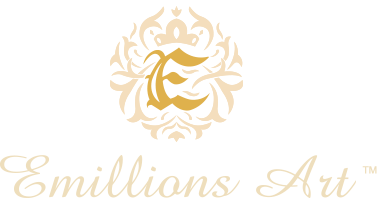In the world of fine art, adjectives such as bold, daring, brave, exciting and adventurous are celebrated and often touted as the marks of truly great work. We revel in the visual viscosity of colors that somehow both clash and complement. We stand, rapt and wrecked, before figures portrayed in emotional poses that send the tingle of memory deep into the soul — the taproot of our heart and mind.
As the water line of our inner emotional state begins to rise, we are forced to process what we feel. See, truly great art reminds us of what we already deeply know. Great artists don’t hope to teach anything, only to create the chance for their viewers to experience a “me too” moment. “Me too” is the realization that we are not alone in this journey. How we feel, what we’ve seen, learned and dealt with is very much shared by our fellow art appreciators, citizens, humans.
Naturally, our shared experiences revolve around not only the good times, but the dark ones as well. Tough times have a pronounced place in our psyche that punctuates the lessons they teach. It follows, then, that art can remind us of what we’ve learned through all circumstances, negative and positive. But, if art only makes us feel the “pleasant” things, is it really doing its complete job?
We deeply know joy. We deeply know pain, fear, grace, darkness and light. Truly great art isn’t afraid to reach down inside each of us and touch these things.
This is the effect of fearless art. And fearless art is created by fearless artists. A truly authentic example of this kind of artist is contemporary painter and sculptor Barbara Rachko. Her personal story is a long and winding road of both personal triumph and tragedy. Rachko’s accolades and achievements are counterbalanced by loss and introspective melancholy.
Barbara has led an extraordinary, inspiring life. She learned to fly at the age of 25 and became a commercial pilot and Boeing-727 flight engineer before joining the Navy. As a Naval officer she spent many years working at the Pentagon and retired as a Commander. On 9/11 her husband, Dr. Bryan C. Jack, was tragically killed on the plane that hit the Pentagon.
Through it all, Rachko remains a uniquely motivated person, driven by an intrinsic desire to enrich both herself and others. She built her skill set as a fine artist later in life and has blossomed into an award-winning painter and photographer. Her use of unusual pairings of vivid, dark colors and stark lighting have created a world that could only come through years of exploration in perspective.
As an illustration of the varied influences that have helped form and fashion Rachko’s unusual visual style, consider the genesis of the idea for her “Black Paintings.” The idea came to Barbara when she attended a jazz history course and learned how Miles Davis developed cool jazz from bebop. In bebop, the notes were played hard and fast as musicians showcased their technical virtuosity. Cool jazz was a much more relaxed style with fewer notes. The music was pared down to its essentials.
These and many other experiences and study of self have influenced Barbara in more ways than one. Her art clearly reflects a life curated with myriad moments diametrically opposed to themselves. Her sculpture and photography have a kind of gritty grace, a dichotomous beauty. Her paintings and pastels — many of them on sandpaper — transmit a kind of tense peace, a tumultuous stillness that can have the effect of both repelling and luring in her viewer.
Rachko’s work could be called ‘niche’ and unique or trembling with narrow appeal, but then, a forceful message through any medium could be described as such. The question with stark statements is not, “to whom does this appeal?” but rather, “does this appeal to me?”. Barbara Rachko is a craftsperson purveying the ‘statement piece’ — and make a statement she does!
While it’s true that a collection can’t be comprised entirely of statement pieces, does a collection without one say much at all? Every artist, collector, curator, appreciator and aficionado has something deep inside that is hungry for revelation — the desire for a piece of art, fearless art, to reach down and bring solace to those truths from lifetimes past.
When we come face to face with fearless art, we feel something unfamiliar, something we may even have spent significant time trying to avoid. We call it ‘the good kind of uncomfortable.’
Barbara’s art can be seen here.




Bravo!! Wonderful article and tribute Barbara… and well deserved.
Happy Holiday!
Finally a clear compelling statement in the literary fir Barbara’s eloquence in the visual/visionary
Leah poller